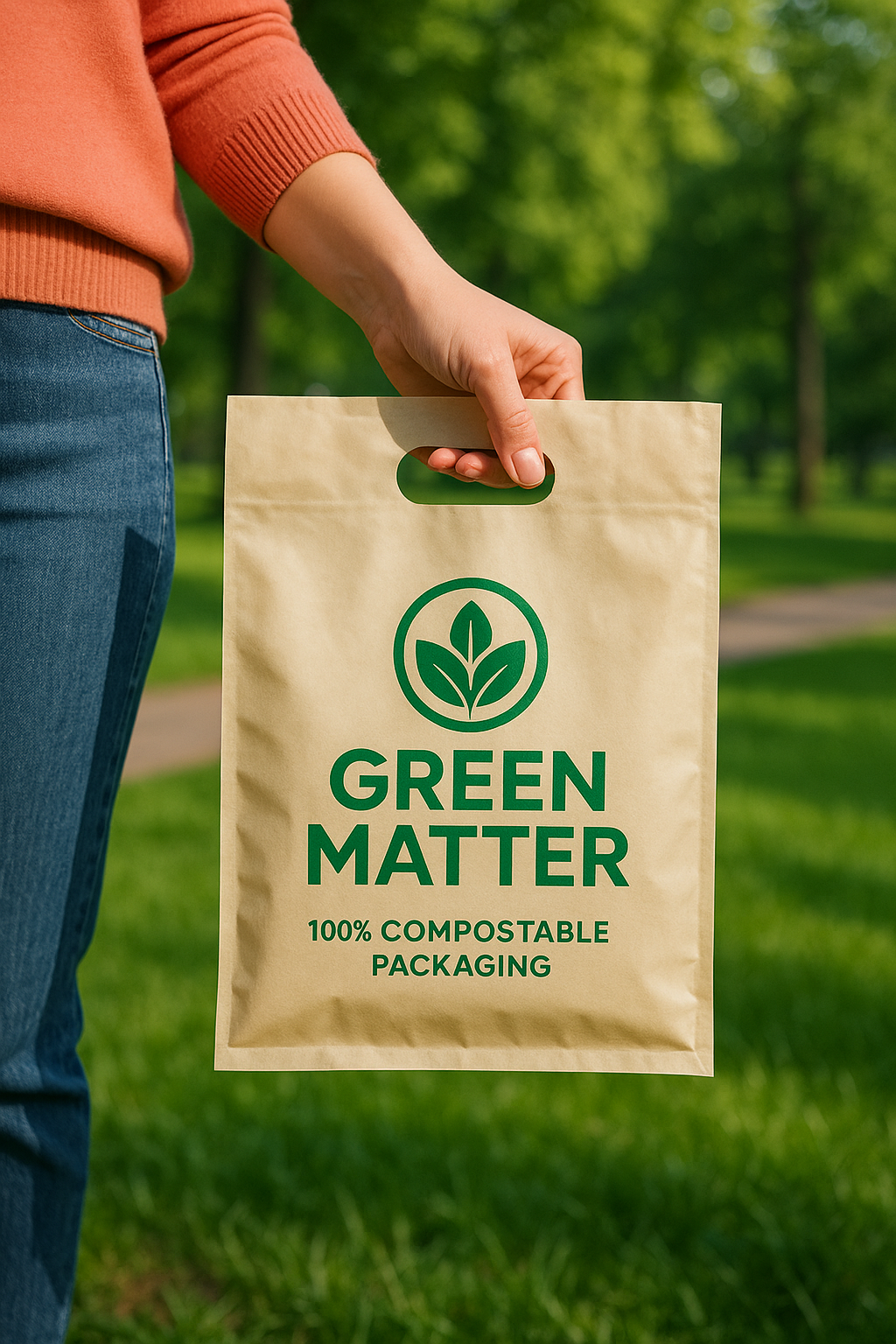
As businesses and consumers grow more eco-conscious, biodegradable packaging has gained immense popularity. From food containers to courier bags, the demand for sustainable alternatives to plastic has led to an explosion of products claiming to be “biodegradable.” But with greenwashing on the rise, how can you tell which packaging is truly biodegradable and which ones are just using the label for marketing purposes?
Identifying genuine biodegradable packaging isn’t just good for the planet—it’s crucial for avoiding deceptive products that might do more harm than good. This guide will walk you through the key features to look for, the certifications to trust, and the red flags that signal a product might not be as eco-friendly as it claims.
What Does Biodegradable Really Mean?
Biodegradable packaging refers to materials that can break down naturally with the help of microorganisms, turning into harmless byproducts like water, carbon dioxide, and biomass. This process should ideally happen within a short period and under natural conditions, unlike traditional plastics that persist for hundreds of years.
However, not all biodegradable packaging is created equal. Some materials break down only under industrial composting conditions, while others are suitable for home composting. The terminology can get confusing, which is why it’s important to understand what makes packaging genuinely biodegradable.
Common Types of Biodegradable Packaging Materials
To verify whether packaging is biodegradable, it’s helpful to know what materials are typically used. Some of the most common biodegradable options include:
-
PLA (Polylactic Acid): Made from corn starch or sugarcane, often used for cups and containers.
-
Bagasse: A fibrous byproduct of sugarcane processing, popular in food packaging.
-
Compostable films: Used in courier bags and wrappers, made from plant-based resins.
-
Mushroom packaging: Grown from mycelium and agricultural waste, used for protective packaging.
-
Paperboard with water-based coatings: Breaks down easily and is often recyclable as well.
Understanding these materials can help you evaluate whether a product’s claims are consistent with how it’s made.
Key Certifications to Look For
Certifications are your best allies in verifying the authenticity of biodegradable packaging. Reputable third-party agencies assess and certify products based on strict biodegradability and compostability standards. Look for the following labels:
-
BPI Certified Compostable: Indicates the product meets ASTM D6400 or D6868 standards in the U.S.
-
TÜV Austria OK Compost (Home & Industrial): Validates compostability at home or in industrial composting facilities.
-
EN 13432 (Europe): A rigorous standard for biodegradable packaging and its eco-toxicity.
-
IS/ISO 17088 (India): The Bureau of Indian Standards’ guideline for compostable plastics.
If a product doesn’t feature any of these certifications, its biodegradable claim should be treated with caution.
Tips to Spot Genuine Biodegradable Packaging
-
Check for Clear Labeling
Authentic biodegradable packaging often includes specific phrases like “compostable in home conditions” or “industrially compostable.” Generic terms like “eco-friendly” or “green” without more details can be misleading. -
Look for Material Transparency
Trustworthy brands will list what the packaging is made of—whether it’s PLA, cornstarch, or bagasse. Avoid products that don’t disclose material composition. -
Review Product Lifespan Claims
Biodegradable items should break down in a reasonable time frame, typically within 90 to 180 days. If the product doesn’t mention this or claims to decompose “eventually,” it may not be genuinely biodegradable. -
Beware of Deceptive Imagery
Leaves, trees, and earthy colors on packaging design can mislead consumers into thinking a product is sustainable. Always rely on certifications over visuals. -
Research the Brand
Look into the manufacturer’s sustainability practices. Transparent companies often provide documentation and test results for their biodegradable packaging.
The Role of Consumers and Businesses
Both consumers and businesses share the responsibility of pushing for transparency and integrity in biodegradable packaging. Consumers should take a minute to read labels and understand what they’re buying. Businesses, on the other hand, should only source from certified manufacturers and clearly educate their customers about proper disposal methods.
Education is crucial here. Even genuinely biodegradable materials may require the right conditions to decompose. For example, some bags labeled as compostable won’t break down in a landfill or ocean environment. Informing end-users about composting requirements is part of responsible packaging use.
Red Flags to Avoid
Not every product claiming to be biodegradable lives up to the promise. Here are some warning signs to watch for:
-
No mention of certification or material on the label
-
Claims that it “degrades under sunlight or heat” (which often means it’s oxo-degradable, not biodegradable)
-
Lack of manufacturer transparency
-
Packaging that resembles traditional plastic in texture or performance without compostability claims
Conclusion
Choosing biodegradable packaging is a meaningful step toward reducing plastic pollution and supporting a circular economy. But not all products labeled biodegradable live up to the promise. By educating yourself on material types, certifications, and misleading claims, you can make smarter, more sustainable choices. Whether you’re a business owner sourcing packaging or a consumer making everyday decisions, identifying genuine biodegradable packaging ensures your effort to go green is both effective and authentic.





